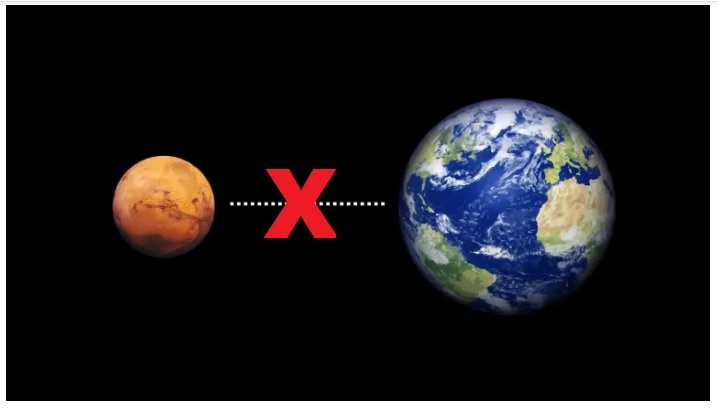
Pakyong, November 7 : Mars is on the verge of a temporary communication blackout, as NASA prepares to halt all transmissions. For over two decades, the United States has maintained a continuous presence on Mars, and recently China joined in with its Tianwen spacecraft. The primary objective of these space agencies has been to explore the planet’s potential as a past or present habitat for life. However, every two years, these spacecraft encounter a challenging situation during an astronomical event known as a “solar conjunction.”
Solar conjunction is a period when Earth and Mars, in their perpetual orbit around the Sun, become hidden from each other due to the Sun’s position in the middle. This celestial alignment effectively renders the two planets invisible to each other, akin to dancers on opposite sides of a massive bonfire.
In 2023, NASA has scheduled the solar conjunction moratorium on commanding Mars spacecraft from November 11 to November 25. During this timeframe, Mars will be within 2 degrees of the Sun, which will severely limit communication due to the Sun’s interference with radio transmissions from the spacecraft.
To navigate this challenging period, mission controllers at NASA’s Jet Propulsion Laboratory have devised various strategies. Some instruments are powered down, while data from others is collected and stored for later transmission. In some cases, they choose to continue sending data to Earth, acknowledging the risk of potential data loss.
Notably, no new instructions are sent to Mars during solar conjunction. The unpredictability of potential data loss caused by interference from charged particles emitted by the Sun poses a significant threat to the spacecraft. Instead, engineers prepare by sending two weeks’ worth of instructions in advance and then patiently wait.
While this may seem like a risky approach, advancements in autopilot technology have considerably improved the spacecraft’s ability to operate autonomously. It’s a bit like parents preparing their children for a short vacation with friends, as mission teams ensure that all necessary commands are uploaded before the solar conjunction takes effect.
In addition to NASA, both China and the United Arab Emirates (UAE) also have spacecraft orbiting above the Red Planet, contributing to the international effort to explore and study Mars. However, all eyes are currently on the upcoming solar conjunction, a natural phenomenon that temporarily disrupts our ability to communicate with these distant robotic explorers.






